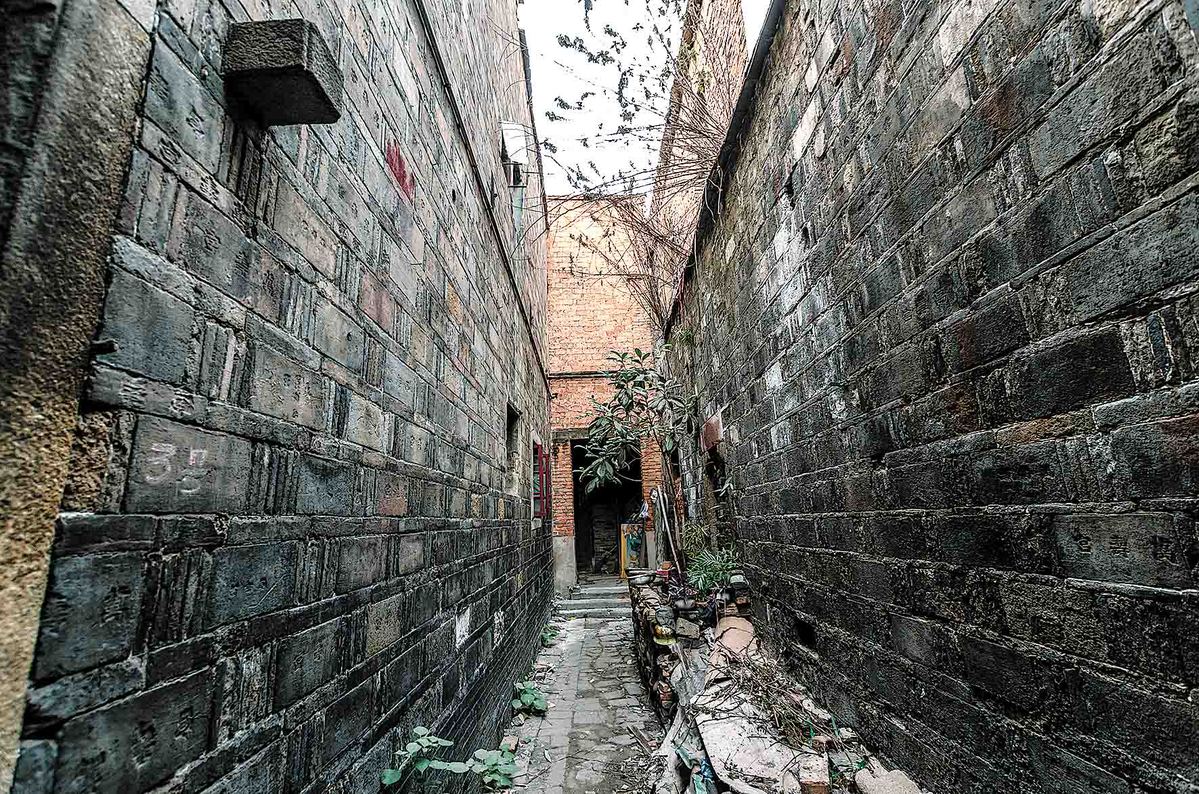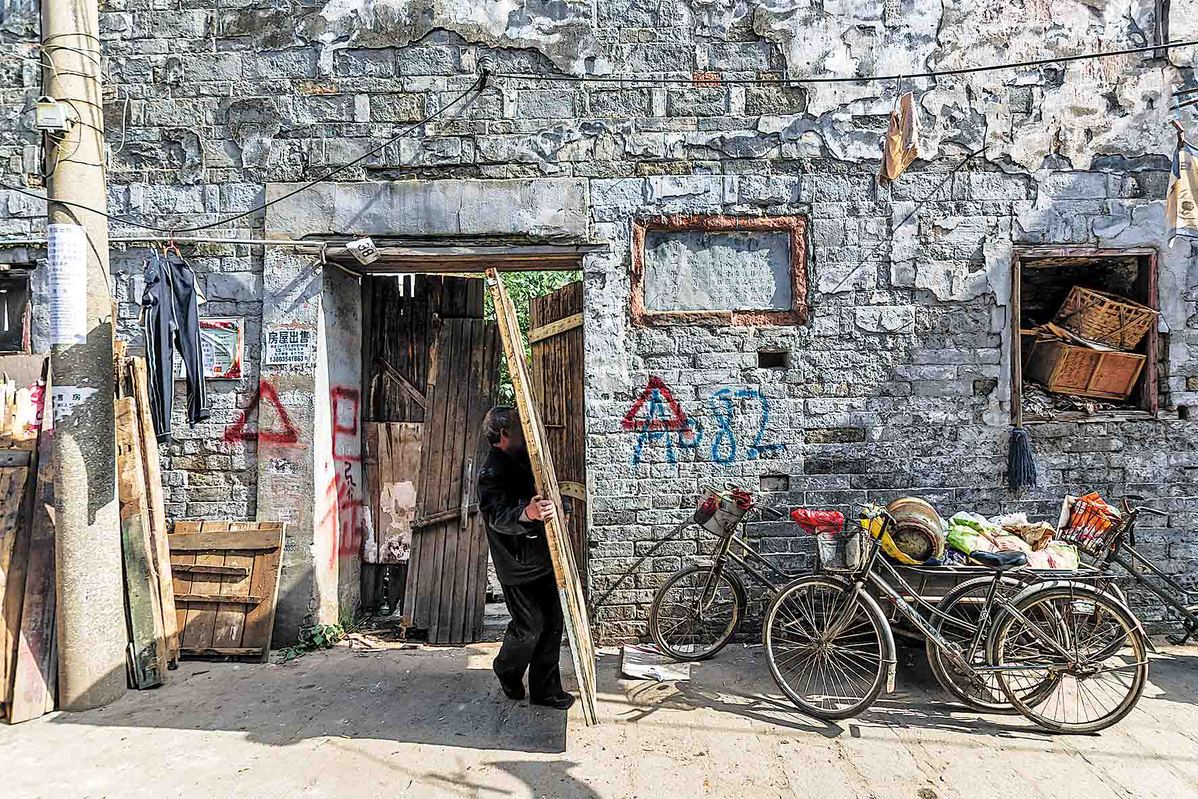
Original bricks of the Wanshou Palace. [Photo provided to CHINA DAILY]
"Locals flooded the post with comments like, 'This was my childhood, but I barely recognize it now'," said Zang.
"When I was in school, I took many pictures around this area. At that time, Wanshou Palace was simply a market surrounded by dilapidated shantytowns where people came to buy inexpensive clothes," he said. "Now, it's totally different."
The old area is located within the main commercial district of Nanchang. It includes various historic thoroughfares and alleys such as Zhubao and Daizi streets near the Guangrunmen Street precinct.
Renovation of the area began in 2013. It took eight years to complete the Wanshou Palace Historical and Cultural Block construction and restoration projects.
"This reconstruction has been extremely successful, transforming the dilapidated old street area in the city center into a vibrant new attraction, which has become a signature destination for tourism in Nanchang," Zang said.

The site of a former Jiangxi guildhall. [Photo provided to CHINA DAILY]
Photographer Zang Yi has documented Nanchang's old streets since his college days, often scaling rooftops to get the perfect shot.
In September 2013, he captured the Wanshou Palace area — then a crumbling warren of cheap clothing stalls in Jiangxi province's capital city — from an Industrial and Commercial Bank of China workers' dormitory.
When he returned to the same spot in April 2025, the new view stunned him: a 54,000-square-meter cultural complex blending ruins from the Qing Dynasty (1644-1911) with neon-lit bubble tea shops. He took a picture from the same angle. His side-by-side photos on Xiaohongshu, or RedNote, went viral with over 80,000 views and more than 200 comments.
 Editor:Qiu Xiaochen
Editor:Qiu Xiaochen